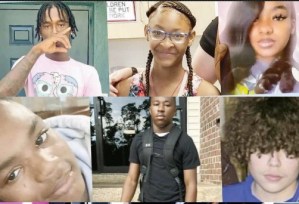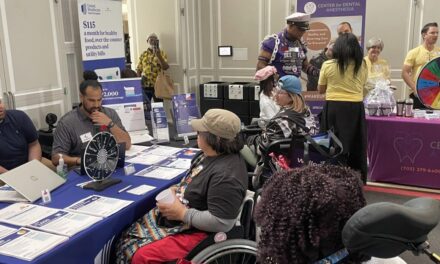By Hiram Jackson,
Word in Black
America’s love affair with incarceration unnecessarily deprives people of their freedom. It also comes with enormous social and economic costs for formerly incarcerated individuals, their families and their communities.
More than 10.2 million people are held in penal institutions throughout the world, mostly as pre-trial detainees, remand prisoners or sentenced prisoners. Although the United States is home to just 5 percent of the world’s population, the nation has 25 percent of the world’s imprisoned population.
Data compiled by the Prison Policy Initiative shows roughly 1.9 million people are incarcerated in the U.S. in 2023 — in state prisons, federal prisons or local jails — the highest rate in the Western world. Another 803,000 Americans are on parole, and 2.9 million are on probation.
The prison and jail incarceration rate in the United States remains between five and eight times that of France, Canada and Germany, and imprisonment rates in Arkansas, Louisiana, Mississippi and Oklahomaare nearly 50 percent above the national average.
But before delving into the racial disparities that run rampant in the penal system — like how one in fiveBlack men born in 2001 is likely to experience imprisonment within their lifetime, which is a decline from one in three for those born in 1981 — we must address what is an even larger issue.
Why does the justice system, like a game of Monopoly, dole out the “go straight to jail, do not pass go” card so readily?
Most incarcerated people, approximately 96 percent in 2021 and 2022, had sentences of over a year. The demographic distribution of incarcerated people remained consistent over the two years, with 32 percent being Black, 31 percent White, 23 percent Hispanic, 10 percent multiracial or of another race, 2 percent American Indian or Alaska Native, and 1 percent Asian, Native Hawaiian or other Pacific Islander.
According to the experts, the main drivers are: (1) changes in laws leading to longer, often mandatory sentences; (2) “truth-in-sentencing” legislation requiring individuals convicted of violent crimes to serve at least 80 percent of their sentences; (3) increased use of incarceration for non-violent crimes; (4) prison privatization.
Behind that legal lingo lies a deep-rooted and much more intrinsic reason, layered in unnecessary and discretionary punishment and a system’s unwavering resolve to make the least capable pay. Cash Rules Everything Around Incarceration“It is said that no one truly knows a nation until one has been inside its jails. A nation should not be judged by how it treats its highest citizens, but its lowest ones,” Nelson Mandela said.
But many people who are arrested are trapped in dismal local jail conditions waiting, no, hoping for deliverance.
Local jails have become modern-day quasi-debtors’ prisons because many of those being held are there simply because they cannot afford cash bail. So they languish and wait for a day in court, which, depending on where you live, might be a months- or years-long process. The wheels of justice grind to a near halt for those without the funds to make them turn more quickly.
Consider the profitability side of the prison equation, and things get clearer. Thousands of private corporations rake in $80 billion a year in profits from America’s carceral system. Bail bond businesses alone make $1.4 billion a year from folks who can pony up the cash to get their loved ones out of jail.
Some of the biggest winners in the mass incarceration scheme are the for-profit prison companies whose business models essentially depend on the number of inmates held in these private institutions.
Currently, the government sends $3.8 billion in federal grants to states and cities for criminal justice purposes. Unfortunately, these grants largely go out on autopilot, pressuring states to increase the number of arrests, prosecutions, and people in prison without requiring a public safety reason.
The reluctance evident in correcting sentencing excesses, particularly for violent crimes as supported by criminological evidence, prolongs the harm and futility of mass incarceration.
The Jobs Opportunity Task Force, a nonprofit advocating for improved skills, jobs and incomes, recently drew attention to the wide-reaching effects of incarceration. They revealed that approximately 113 million adults in the U.S., or roughly 45 percent, have a family member with a history of imprisonment, and 79 million individuals possess a criminal record — greatly impacting opportunities for meaningful employment for the formerly incarcerated, regardless of guilt or innocence.
An even sadder reality, though, is that one year of housing a prisoner is comparable to the cost of a year of college.
Black and Behind Bars, Possibly for Life
But back to the racial disparities, another scourge of mass incarceration. In 2021, Black adults were five times as likely to be incarcerated as White adults, and Black youth were just over four times as likely to be locked up in the juvenile justice system as their White peers. In seven states — California, Iowa, Connecticut, Minnesota, New Jersey, Maine and Wisconsin — Black adults are incarcerated nine times more often than their White peers. Twenty-eight states exercise some form of a “three strikes” law, which automatically sentences individuals convicted of a third offense to harsher penalties and, in some cases, life sentences.
Yes, life in prison for offenses ranging from an indiscretion as marginal as failed custody cases, low-level drug possession, and non-violent misdemeanors.
In California, which has had a three-strikes law since 1994, more than half of the people incarcerated by the law are doing time for nonviolent crimes. Due to the work of activists, in 2012 Californians voted to amend the law, eliminating life sentences for nonviolent crimes. It’s estimated the change will save the Golden State $1 billion over the next decade.
The three strikes you’re out rule should be for baseball, not life-long deprivation of freedom. The bottom line is that the American penal system doesn’t value human life. Instead, our courts prefer to address individual transgressions and crimes by imposing bigger and more brutal infringements on hapless citizens who encounter the criminal justice system’s peculiarly punitive measures. These measures operate as intended: to cause long-term suffering and pain.
In this country, the punishment rarely really fits the crime. Meanwhile, Black people keep suffering whileprison profiteers laugh all the way to the bank.

Hiram Jackson is the CEO and publisher of Real Times Media, which includes The Michigan Chronicle, a partner in the Word In Black collaborative.
This article was originally published in Word in Black.
The post Opinion: Why mass incarceration still has mass appeal appeared first on AFRO American Newspapers .











